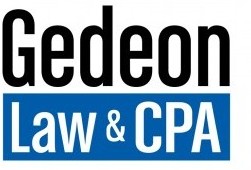Beginning with the 2013 tax year, a new 3.8% Medicare “surtax” will likely apply to all taxpayers whose net income exceeds a certain “threshold amount.”
This is currently expected to be $200,000 for single taxpayers and $250,000 for married taxpayers filing jointly.
The 3.8% Medicare tax will be applied to unearned income (interest, dividends, capital gains, royalties and rental real estate) of higher-income investors.
This new “surtax” will, in essence, raise the marginal income tax rate for affected taxpayers. Thus, a taxpayer in the 39.6% tax bracket (i.e. the highest marginal income tax rate in 2013 if the Bush Tax Cuts expire) could have a marginal rate of 43.4%.
For taxpayers to be able to plan around the tax, it helps to first understand what income it applies to and how the tax is calculated.
The following examples help illustrate how the new 3.8% Medicare tax will impact taxpayers:
Example 1: Paul & Mary, married filing jointly, have $400,000 of salaries and $50,000 of net investment income. They will pay the 3.8% surtax on $50,000.
Example 2: Linda, a single taxpayer, has $225,000 of net investment income and no other source of income. The 3.8% surtax would apply to $25,000 of income.
Example 3: John, a single taxpayer, has $100,000 of salary and $50,000 of net investment income. The 3.8% surtax would not apply.
Example 4: Terry & Tina, married filing jointly, have $300,000 of salaries and no net investment income. The tax 3.8% surtax will not apply because they have no investment income.
These tax changes are likely on the horizon for many Americans regardless if congress fails to act and renew the Bush Tax Cuts for all Americans. To further exacerbate the situation, taxpayers will likely not know these implications until after the November 2012 election, giving them a limited window to make adjustments.
There are tax and investment strategies you should start considering now that can help avoid attracting the new surtax, and likely reduce the tax bracket you have to pay for your total income.
These include the following:
- Capital gain harvesting at today’s lower capital gains rate
- Roth IRA conversions (beneficial to do a Roth IRA conversion now, at the “old” tax rates)Investment strategies for reducing “net investment income” to minimize the health care surtax
- Exercising stock options
Please call Gedeon Law & CPA to arrange for a complimentary review of your potential tax exposure in 2013 so we can discuss some tools and tactics to help you develop a solid plan in anticipation of these tax increases.




